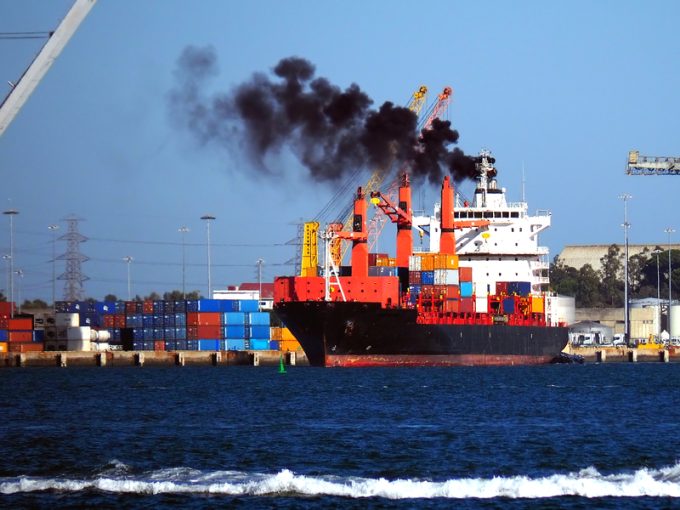UK port groups try to deflect from findings on shipping pollution
On 20 May, Transport & Environment (T&E) published a briefing, Coastal Fug: the UK’s most ...
TSLA: OVERWHELMING SUPPORTCHRW: SHORT INTERESTDHL: REFLECTING ON GUIDANCEDHL: EXPRESS FOCUSDHL: FORWARDING UPSIDEMAERSK: FAILED BOUNCEATSG: DOWN AGAINMAERSK: RATES JOY AND PAINR: INVESTOR DAY AND HIGHER RETURNSWMT: PRICES ON WATCHTSLA: CEO PAY PACKAGECAT: STRONGDHL: SPOTTING TRENDSAAPL: ANOTHER HIGH
TSLA: OVERWHELMING SUPPORTCHRW: SHORT INTERESTDHL: REFLECTING ON GUIDANCEDHL: EXPRESS FOCUSDHL: FORWARDING UPSIDEMAERSK: FAILED BOUNCEATSG: DOWN AGAINMAERSK: RATES JOY AND PAINR: INVESTOR DAY AND HIGHER RETURNSWMT: PRICES ON WATCHTSLA: CEO PAY PACKAGECAT: STRONGDHL: SPOTTING TRENDSAAPL: ANOTHER HIGH

The British Ports Association (BPA) has called on the industry to disregard the findings of a new Transport & Environment (T&E) report on sulphur emissions in ports, saying that it “lack[s]… academic rigour”.
Milford Haven, Southampton and Immingham are Britain’s three most polluting ports for sulphur oxide (SOx) and particulate matter (PM2.5).
Like many reports made by T&E, the latest makes a comparison between the emissions from ships and cars, pointing out that 472 ship calls in Milford Haven in 2022 produced as much SOx as one million cars.
“The bizarre comparison of shipping emissions to emissions from cars is comparing apples with oranges and adds nothing to ongoing policy debates,” the BPA stated on Friday.
According to a study released in 2018 by Ricardo Energy & Environment, ships at berth account for some 3.6% of sulphur emissions from the UK transport sector. The study also compared CO2 emissions, of which shipping’s component was 0.68%.
Historically, conflation of SOx and CO2 emissions have been used to make misleading comparisons between shipping and road transport. For example, in 2009 a Guardian article declared “just 15 of the world’s biggest ships may now emit as much pollution as all the world’s 760m cars,” neglecting to mention it was SOx emissions being compared — not CO2, the biggest pollutant from either source.
“Air pollutant emissions from ships are limited whilst at-berth when the main engines are turned off,” Mark Simmonds, BPA policy and external affairs director, said. “To exclude any dispersion analysis or other factors that affect how pollutants actually impact human populations is irresponsible and discredits the findings.”
By way of a solution to emissions in ports, T&E proposes shore power, which would eliminate ship emissions while at berth as they plug in alongside. In fact, in California, a regulation requiring ships to plug into shore power has been responsible for a reduction of 80% in harmful air emissions within port bounds.
But BPA also takes issue with this, saying that whatever political will there might be to offer shore power in ports, “…a mandate is unworkable, especially as it can take many years to secure the required power,” and highlighting that just 1.5% of vessels are fitted with equipment to plug into shore power.
“The reality is that shore power is a means to tackle emissions and not an end in itself to aim for,” claimed BPA. “Government policy on abating emissions at berth must be technology neutral and industry is well advanced in exploring these options.”
Under FuelEU Maritime, EU regulation 2023/1804 creates “the obligation for ports to provide on-shore power supply (OPS),” and regulation 2023/1805 requires some vessels – namely passenger and cruise ships – to plug in from 2030. A container vessel of more than 50,000 gross tonnes (Ever Given is 221,000) can experience berth-side power demand of over 6MW, according to the European Maritime Safety Administration (EMSA).
“T&E UK are calling on the Government to implement long-overdue policy and regulations to finally get to grips with the combined and increasingly urgent issues of air pollution and greenhouse gas emissions from UK shipping,” said the T&E statement accompanying release of the report today. “The government has an opportunity to so in its forthcoming refreshed Clean Maritime Plan which it must not waste.”
Comment on this article